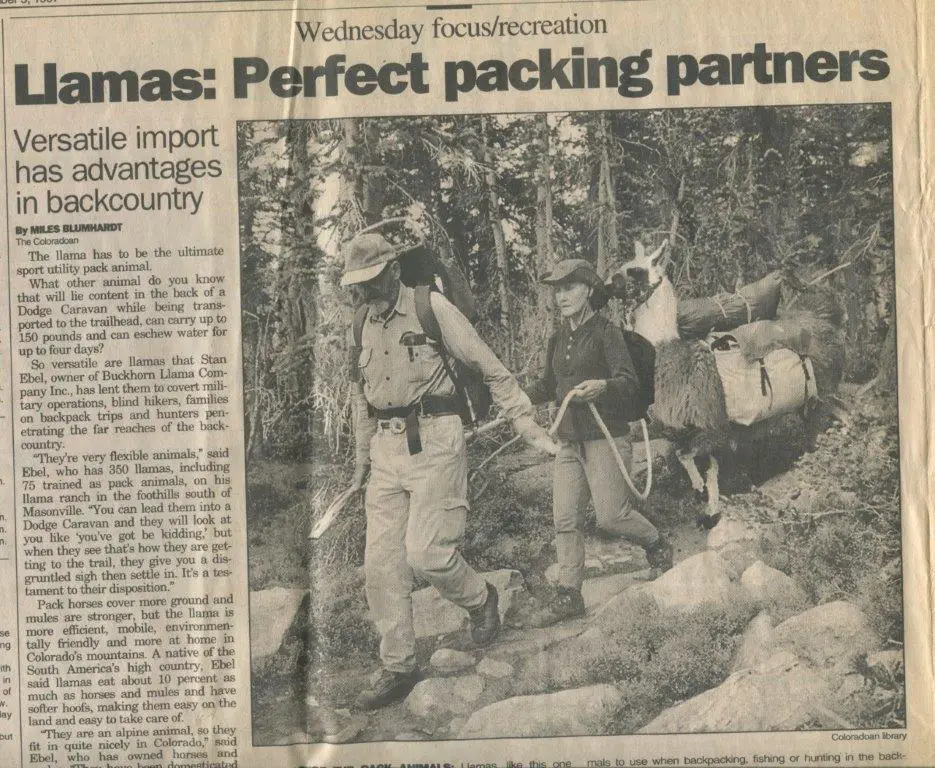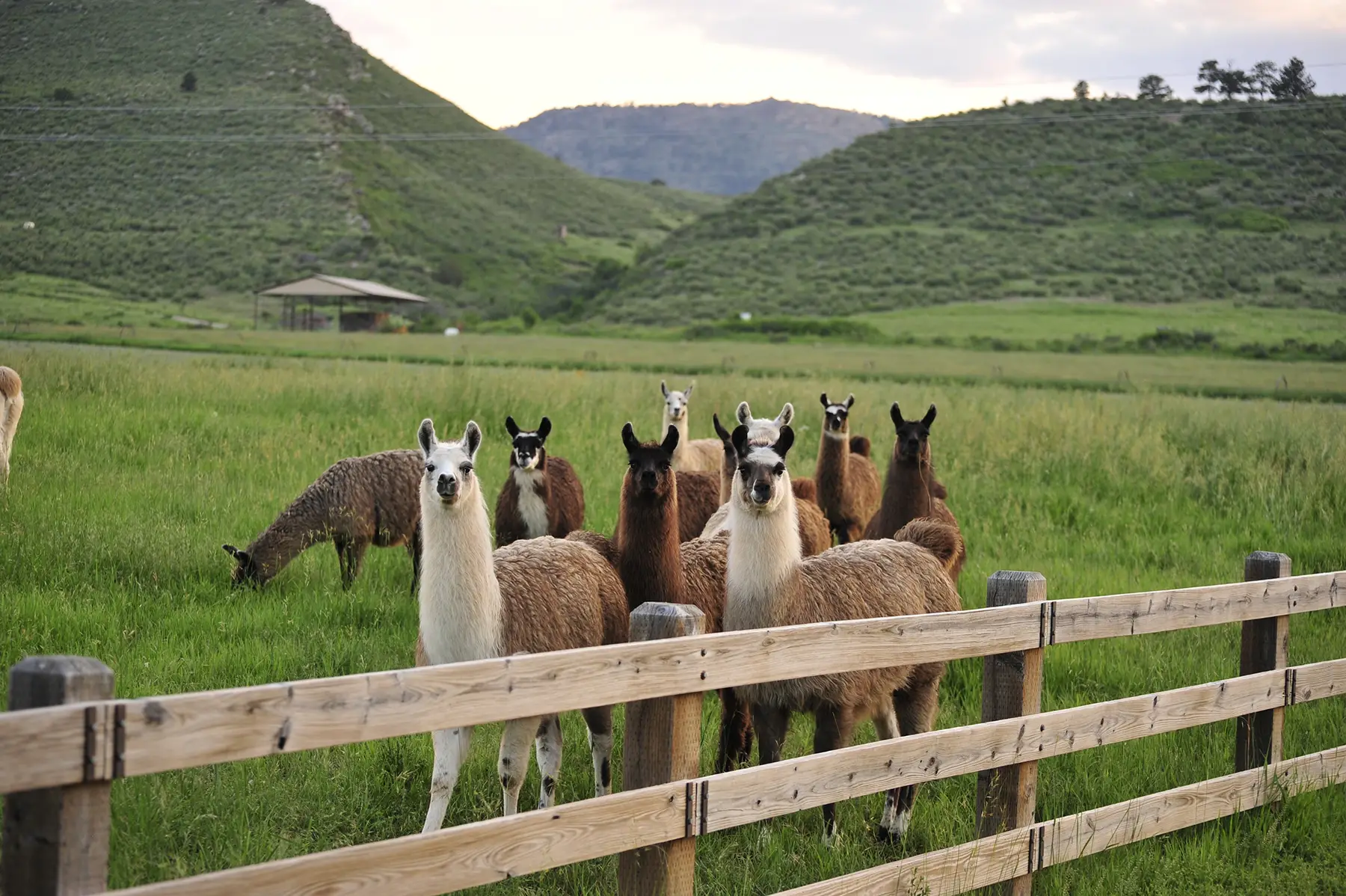In 1997 Buckhorn Llama Company was asked to lead a Tactical Pack Animal Operations Course for the 10th Special Forces Group/ 101st Airborne. The Sgt Major soliciting the instruction wanted to explore the possibility of supporting special ops in remote theatres of operation with llamas and equine stock.
At that time, Buckhorn Llama Company was experienced using llamas to support a broad spectrum of backcountry projects, but some aspects of active combat support were outside our experience. We agreed to provide the instruction with the understanding that it would be based on our current level of experience. From that foundation we would explore the llamas specific combat capabilities based on an empirical collaboration.
I assured the C.O. that the llamas were capable of handling loads in rugged terrain and had the athleticism and endurance to hold up. What would need to be established by collaboration were their reactions to firefights and working for extended periods in the dark with no artificial light.
On June 26, 1997, 44 special operators came to our ranch ready to spend the next 4 days learning all they could about packing llamas in combat situations. Additionally, they brought in a secure van and guards carrying the weapons and support equipment they would routinely pack for an operation. Our repair shop was converted into an armory and a security team bivouac for the instruction period.
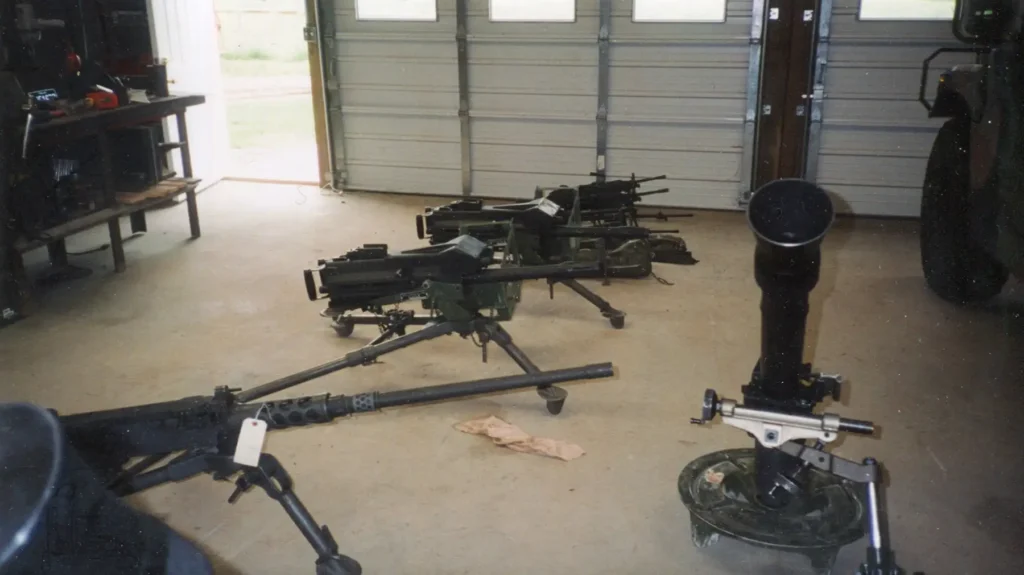
A local mule packer had agreed to provide parallel instruction for packing mules with the same loads, in the same conditions to compare the advantages and disadvantages of each species.
We conducted one day of classroom instruction regarding llama behavior, care, and maintenance in the backcountry. Then we did two days of hands-on saddling, loading, balancing, and moving on and off the trail. We also addressed considerations for picketing in camp and supplemental feeding and transporting. We demonstrated packing techniques required for the weapon systems and arms they were hauling. Most were not symmetrical or conforming loads and required special load techniques.

We hiked on rough hogback trails with 25 llamas, ranging from fully-trained to raw rookies. We showed training and handling techniques precipitated by the varying levels of experience for each llama encountering varyious obstacles. The operators asked for this exposure to untrained llamas as they presumed if they could find llamas to use in most foreign operations, they would be untrained. They were interested in knowing what to expect.
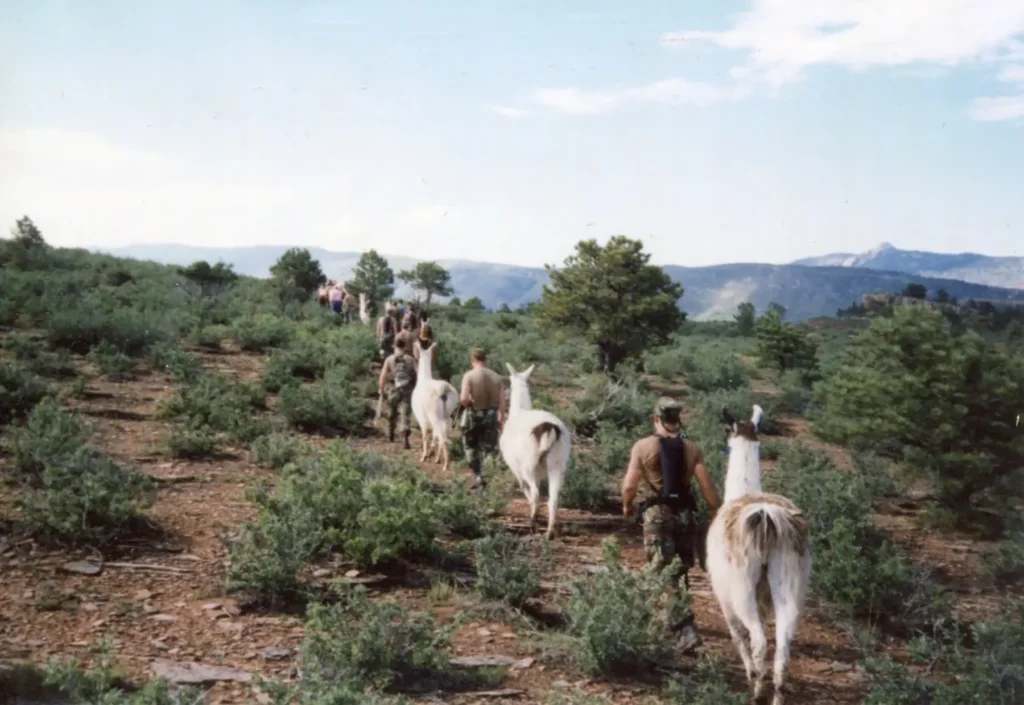
The hike culminated with the llamas exposed to a 3 machine gun fire fight simulation. The llamas remained calm throughout the 10 minutes of uninterrupted gunfire and resorted to browsing on brush while enduring the relentless noise. The operators were amazed and impressed.
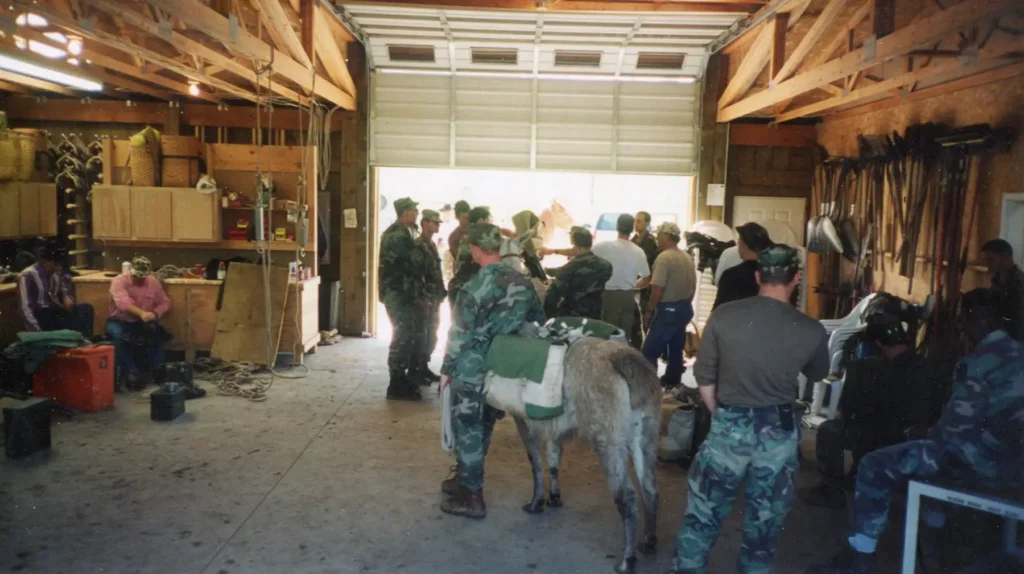
On the afternoon of day 4 the operators were split into seven groups, each with 6 operators. 5 groups were given 3-4 llamas /group and a variety of weapons and two groups were assigned 2 mules and an assortment of cargo. The groups had one hour to stage and pack their loads and be ready to leave for the Dry Creek Trailhead at 18:00 hours. Thus began their final exam.
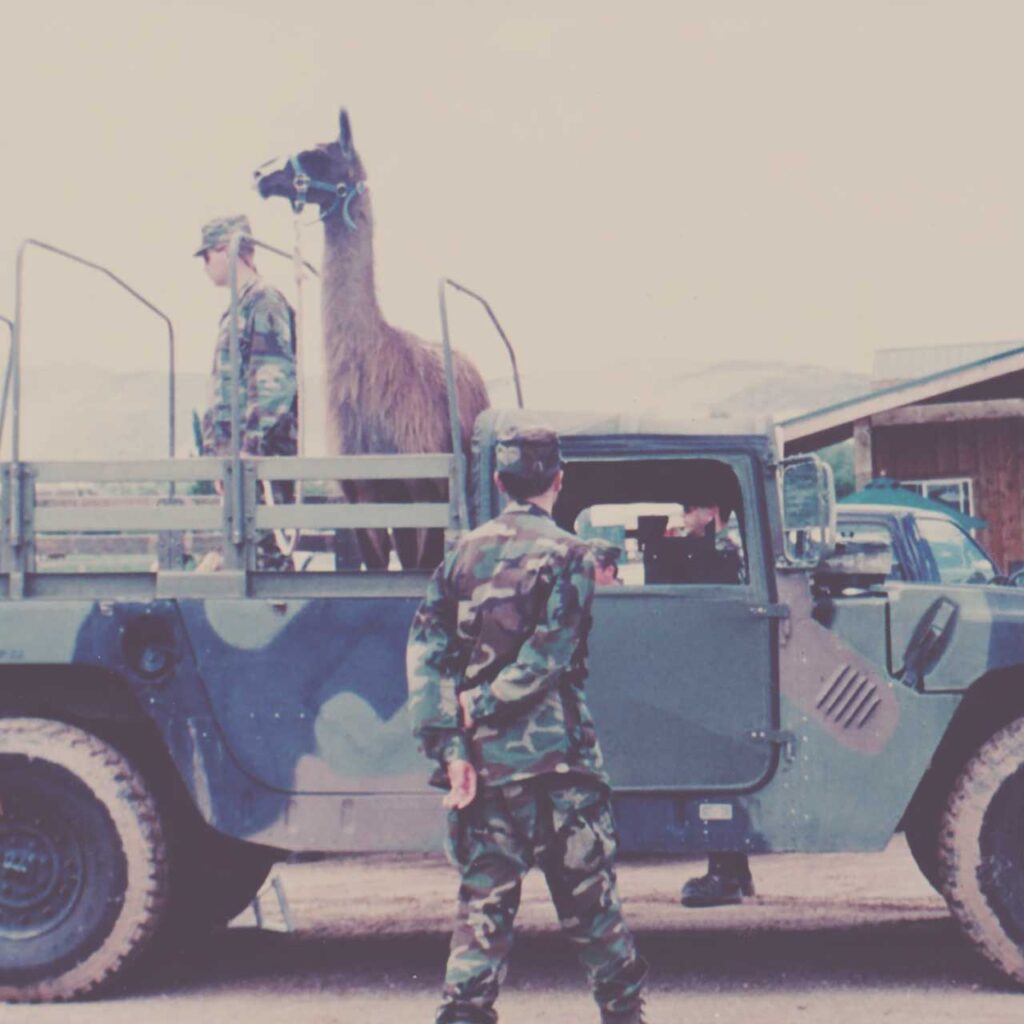
The teams rigged their llamas and mules and at sundown departed for a simulated night op that would entail hiking 14 miles of back country to arrive back at Buckhorn Llama Company HQ at sunrise.

There was no moon light after 9:00 PM and the draws on NE slopes were black. I was following their direction on the night strategy, since they were the pros. Their plan was for me to wear the nods (night vision goggles) and call out obstacles as they proceeded through the dark leading the llamas. The mules went up an adjacent road with headlamps.
The images I had were grainy and all I could discern were the soldiers and the llamas. I watched about 100 yards of travel with soldiers disappearing from sight and the trailing llamas matter-of-factly stepping over or around the obstacle I could not see and the soldier it had felled.
I called an audible and told the men to lead the llamas from behind and to follow the llamas’s footsteps. From that point we traveled smoothly. We descended the ridge to the ranch as day broke with the men projecting the advantages of using llamas on actual night ops. They observed the llamas’ heads moved perfectly to avoid tree branches. They followed in confidence they would not have an eye watering, compromising their effectiveness. Nods were not required when following the llamas, a significant advantage to preserve adapted night vision in a hot engagement.
Upon reaching the ranch, the men rested for the balance of the day and enjoyed a barbecue that evening. A dinner recap of the instruction was very positive and the consensus was that llamas would be an asset in special ops. This was tempered by the guy they called “gramps”. His age was 49 years old, almost double the age of the majority of the group. He complimented us on the instruction and our operation and assured us that the concept made so much sense, there was no chance of actually using llamas. Military realism.
That assessment remained true until 9/11/2001.
